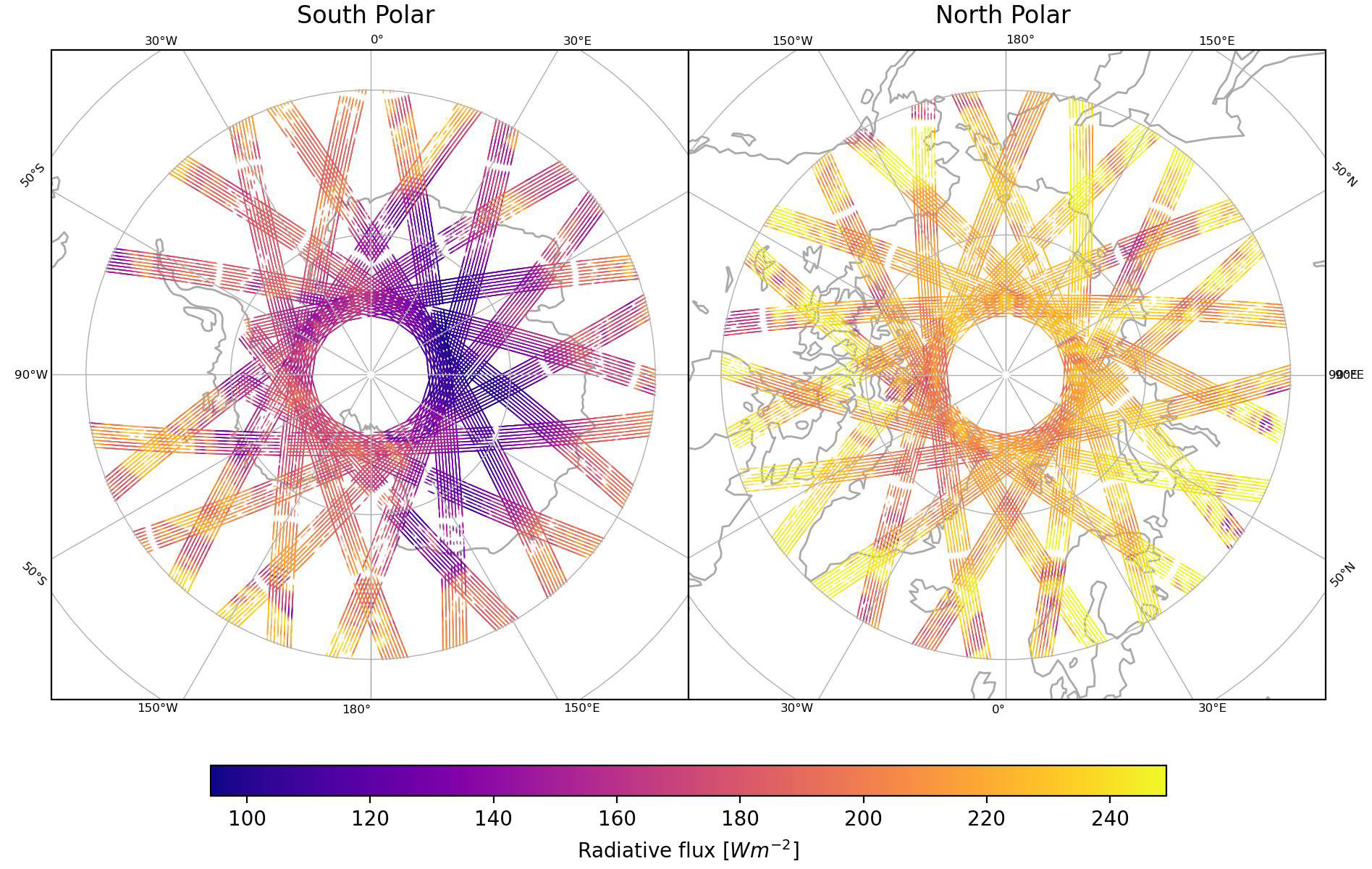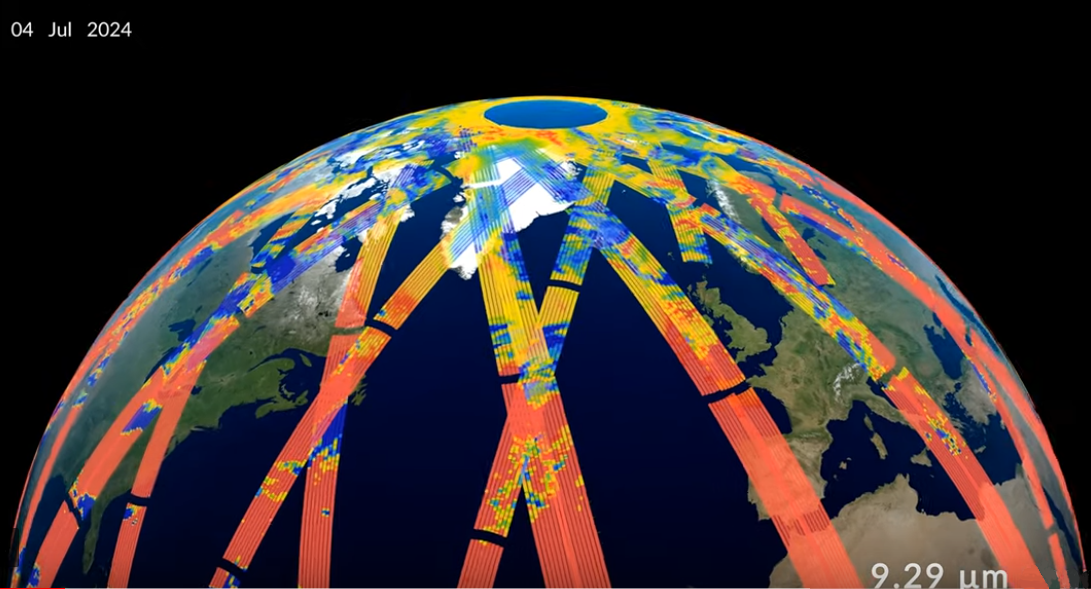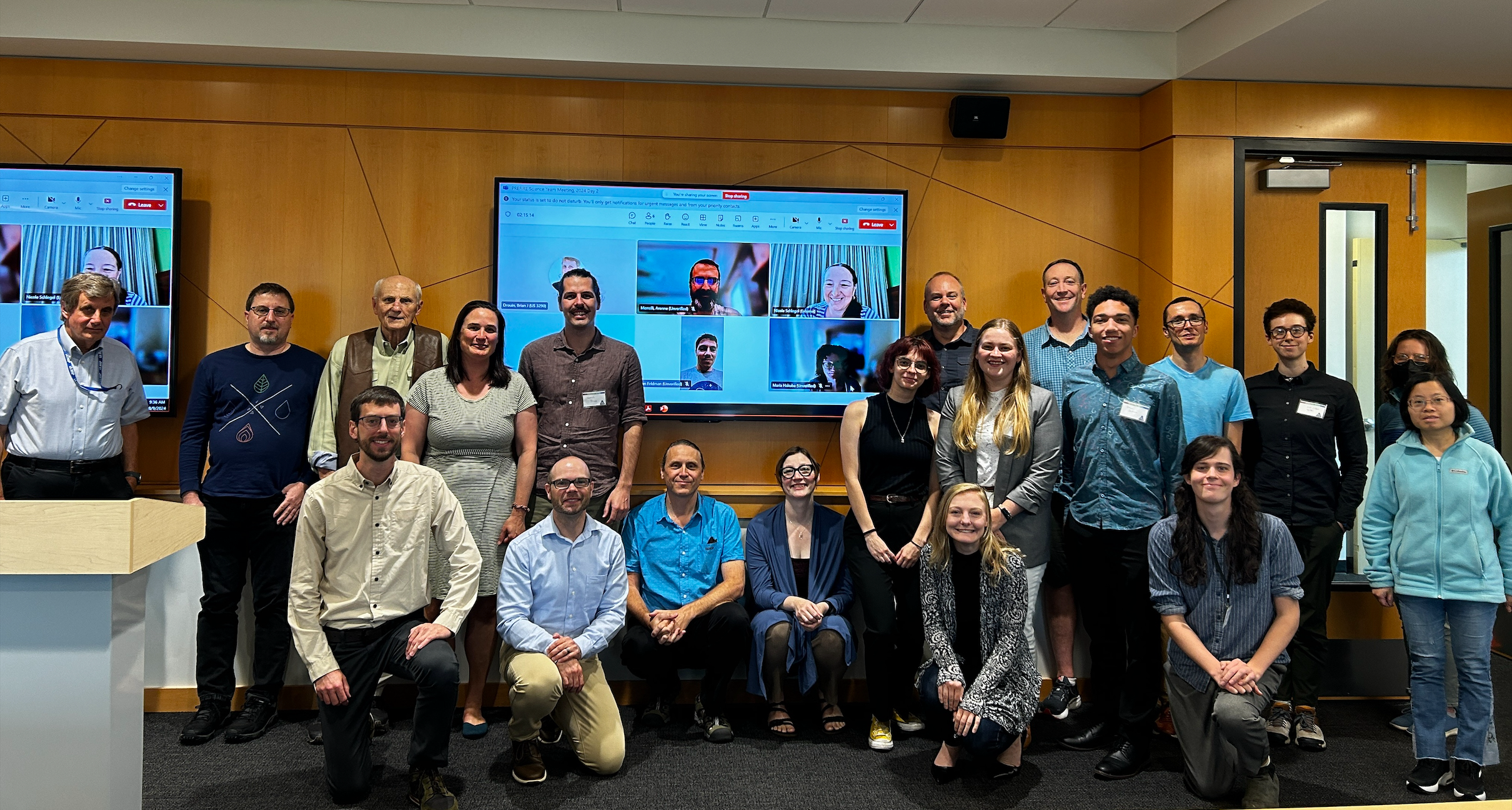Published on 15 Oct 2025 | Hamish Prince
In collaboration with PREFIRE, the Southern Hemisphere polar Infrared Radiation Experiment (SHIRE) has begun an intensive observation campaign at Scott Base (78°S, 166°E) in McMurdo Sound, Antarctica. Funded primarily by Earth Sciences New Zealand (formally NIWA), SHIRE is a USA-DOE ARM small campaign (https://www.arm.gov/research/campaigns/osc2024SHIRE) coordinating an instrument deployment in the Antarctic region to provide necessary validation for PREFIRE while also facilitating numerous novel science questions. The observations focus on the deployment of an extended-range Atmospheric Emitted Radiance Interferometer (ER-AERI; managed by UW-Madison SSEC; https://www.ssec.wisc.edu/aeri/) measuring the downwelling spectrally-resolved infrared radiation from the Antarctic atmosphere (between 3.3–25.0 µm). Paired with PREFIRE, these instruments will provide novel observations from both the surface and top-of-atmosphere allowing for total closure of the atmospheric emission spectra.

In addition to the ER-AERI, several other instruments are being utilized in McMurdo Sound to provide crucial supplemental information including a cloud height ceilometer, GNS-based water vapor observations, an all-sky imager, surface weather stations, regular radiosondes, and FTIR/UV remote sensing spectrometers. The full deployment of SHIRE at Scott Base begins in November 2025. These measurements will provide detailed observations on the role of water vapor, clouds, and absorbed heat on polar atmospheric thermal emissions at both the surface and top-of-atmosphere. Campaign scientists are particularly excited to use paired SHIRE and PREFIRE observations for robust validation of general circulation models in Antarctica, offering a novel attribution of model biases. Process-level science questions relating to weather will also be addressed examining the spectral radiative properties of variable synoptic conditions. Lastly, retrieved vertical profiles of temperature, water vapor, and cloud properties will also serve as crucial validation for the PREFIRE retrieval algorithms in this data-poor region. Other AERI deployments (previous and ongoing) will also be used to compare and contrast the changing and variable atmospheric spectral emission.

SHIRE is a USA Department of Energy - Atmospheric Radiation Measurement Facility campaign funded by Earth Sciences New Zealand in collaboration with Antarctica New Zealand, NASA PREFIRE, the University of Wisconsin-Madison, and the University of Canterbury.
PI: Dan Smale (Earth Sciences NZ)
Co-I: Sam Dean (Earth Sciences NZ), Hamish Prince (UW-Madison), Jonathan Gero (UW-Madison), Tristan L’Ecuyer (UW-Madison), and Adrian McDonald (U. Canterbury)
- PREFIRE First Light Announcement!
- 2024 PREFIRE Science Team Meeting
- Second PREFIRE Satellite Launched!
- Update on second PREFIRE CubeSat launch
- First PREFIRE Satellite Launched!
- Rocket assembly pics and PI radio interview
- Launch update and a new short video!
- NASA's tiny twin polar satellites (first launch soon)
- Pre-launch anticipation of PREFIRE CubeSat science
Recent Posts

In collaboration with PREFIRE, the Southern Hemisphere polar Infrared Radiation Experiment (SHIRE) has begun an intensive observation campaign at Scott Base (78°S, 166°E) in McMurdo Sound, Antarctica. The two in-orbit PREFIRE TIRS instruments and a ground-based ER-AERI instrument deployed by SHIRE will provide novel observations from both the surface and top-of-atmosphere allowing for total closure of the atmospheric emission spectra.
Read more
The PREFIRE Mission is excited to announce that all PREFIRE data products are now available to the public via the Atmospheric Science Data Center (ASDC)! PREFIRE data collections include Level 1 Radiance, retrieved Level 2 products, Level 3 climatologies, and supporting auxiliary products.
Read more
NASA has publicly released the first look at PREFIRE mission data, also known as the first light announcement! The PREFIRE science team worked with NASA’s Scientific Visualization Studio to create a first light video. It showcases some of the fascinating infrared details of the Arctic surface and atmosphere that PREFIRE-SAT2 captured in July 2024. The PREFIRE science team is hard at work analyzing the countless measurements that the twin CubeSats are radioing to the ground every day.
Read more
The 2024 PREFIRE Science Team Meeting was held at the University of Colorado on August 8th and 9th. The PREFIRE team, led by Tristan L'Ecuyer (PI) discussed the status of the PREFIRE CubeSats and instruments, the Science Data Processing System (SDPS), and preliminary data output, as well as the nuances and considerations of this unique dataset. The team also discussed potential validation activities and heard from several external scientists about related projects with the potential for both collaboration and validation.
Read more
Rocket Lab successfully launched the second of two PREFIRE satellites from Mahia, New Zealand at 3:15 pm NZST (3:15 am UTC).
Read more